Overview and progress updates on the LIBRA tritium breeding project



Remi Delaporte-Mathurin, Nikola Goles, Davide Pettinari, Collin Dunn, Emily Edwards, Sara Ferry, Ross MacDonald, Stefano Segantin, Weiyue Zhou, Kevin Woller

LIBRA: derisking fusion power plants
What is the smallest breeding blanket that can demonstrate a TBR of 1?
🎯Demonstrate T self-sufficiency with DT neutrons
🎯Validating neutronics and tritium transport models
🎯Investigate tritium extraction from liquid breeders

LIBRA experiment

Ferry, Sara E., et al. ‘The LIBRA Experiment: Investigating Robust Tritium Accountancy in Molten FLiBe Exposed to a D-T Fusion Neutron Spectrum’. Fusion Science and Technology 0, no. 0 (17 June 2022): 1–23. https://doi.org/10.1080/15361055.2022.2078136.


Half-life: 12 years
☢
Consumption of a 1 GWth fusion reactor (1 year)
50 kg
The breeding blanket


FLiBe
14 MeV neutron source
Li + n → T + He
Neutron multiplier
The LIBRA experiment
~1 m

Tritium transport
Transport mechanisms:
- Diffusion
- Advection
Release pathways:
- Release gas/liquid interface
- Permeation through walls
The LIBRA experiment

Sweep/sparge gas
Tritium detection
The LIBRA experiment




The BABY programme studies tritium breeding at a small scale
- \(14 \ \mathrm{MeV}\) neutrons generated
- tritium created from nuclear reactions
- tritium transport in the salt
- tritium released into the gas phase
- tritium collection and accountancy
Molten salt @ 700C
neutron generator
Tritium collection
reentrant heater
How to measure TBR?
We need to measure these two numbers!
The BABY 100 mL experiment
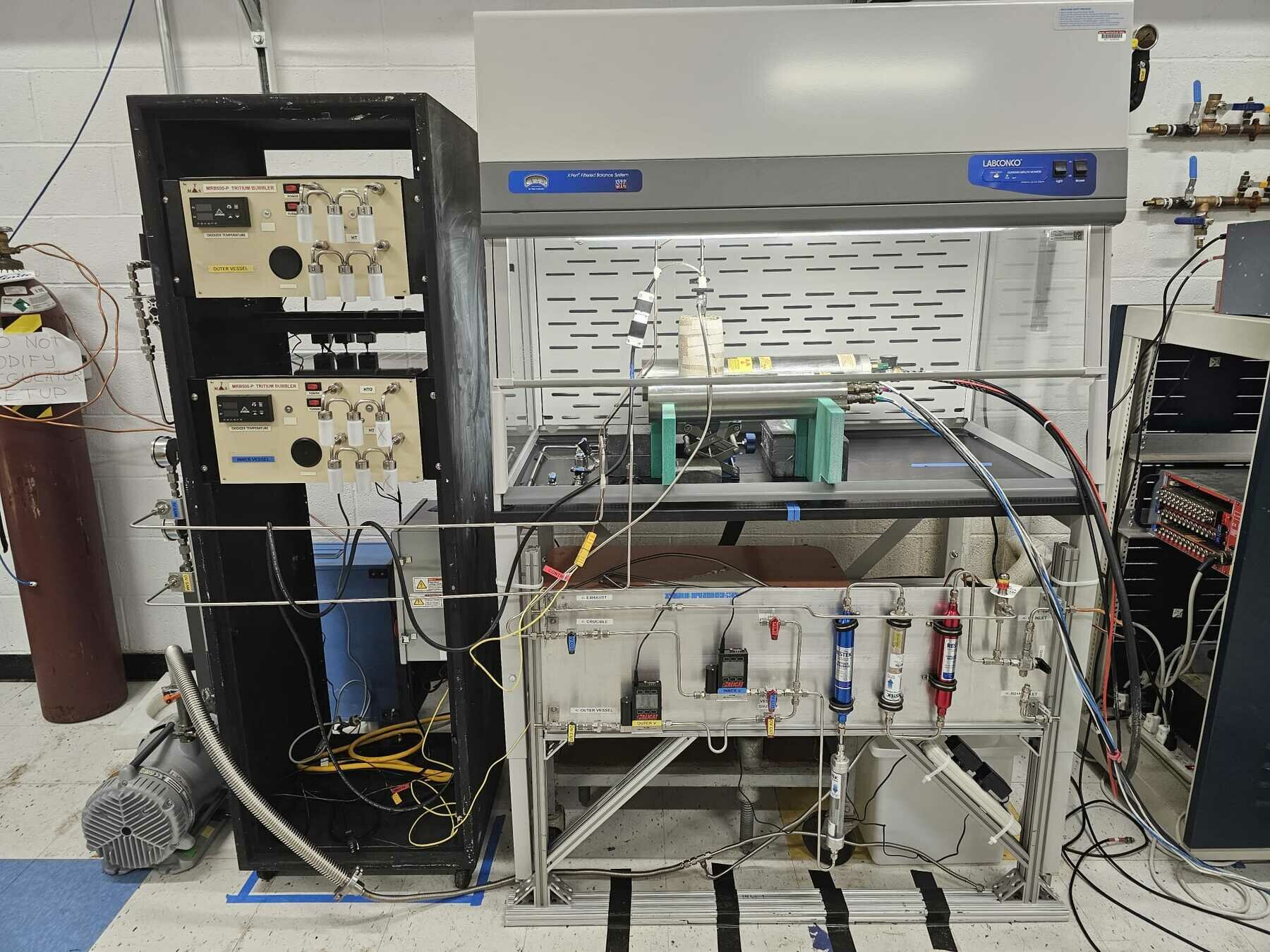
Delaporte-Mathurin, Rémi, et al. ‘Advancing Tritium Self-Sufficiency in Fusion Power Plants: Insights from the BABY Experiment’. Nuclear Fusion, 2024. https://doi.org/10.1088/1741-4326/ada2ab.
Neutron generator
Bubblers
Molten salt capsule
Gas handling system
Temperature control
Tritium was measured using
Liquid Scintillation Counting

HTO, TF and TCl
(soluble in water)
HT, T2
(insoluble)
More details in Nikola Goles' talk tomorrow...


Liquid Scintillation Counting

Counts between 0-18.6 keV for tritium detection
Neutrons are detected with a combination of techniques

Nb/Zr activation foils

provides real-time neutron rate

A8 Diamond proton recoil telescope



Neutrons are detected with a combination of techniques

A8 Diamond proton recoil telescope


supported by Cividec
DD peak
(2 MeV)
DT peak
(14 MeV)

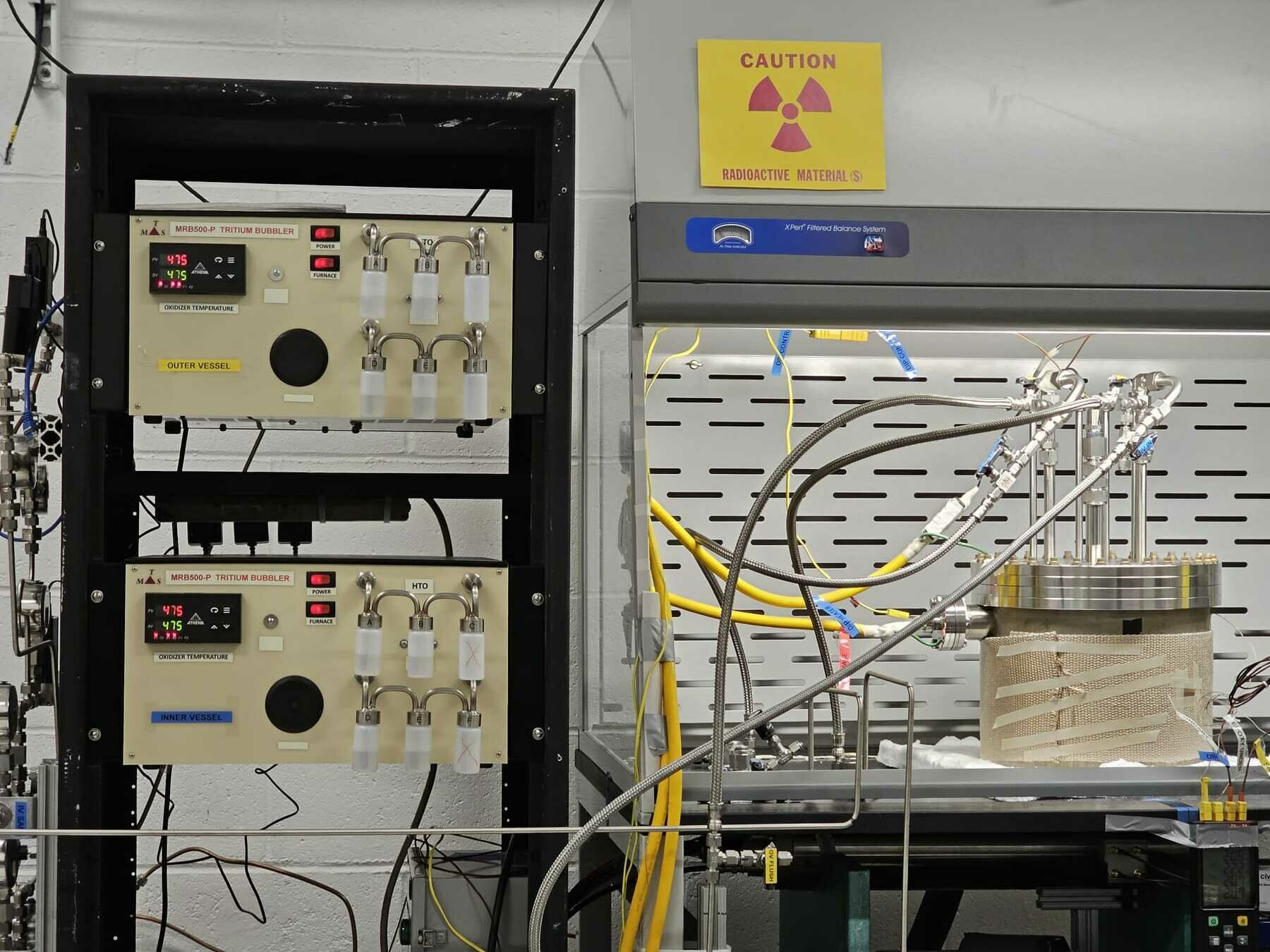
Upgrade: BABY 1 L
Autumn 2024
1 L of salt
More ports for diagnostics
Outer-vessel for permeated tritium

New crucible
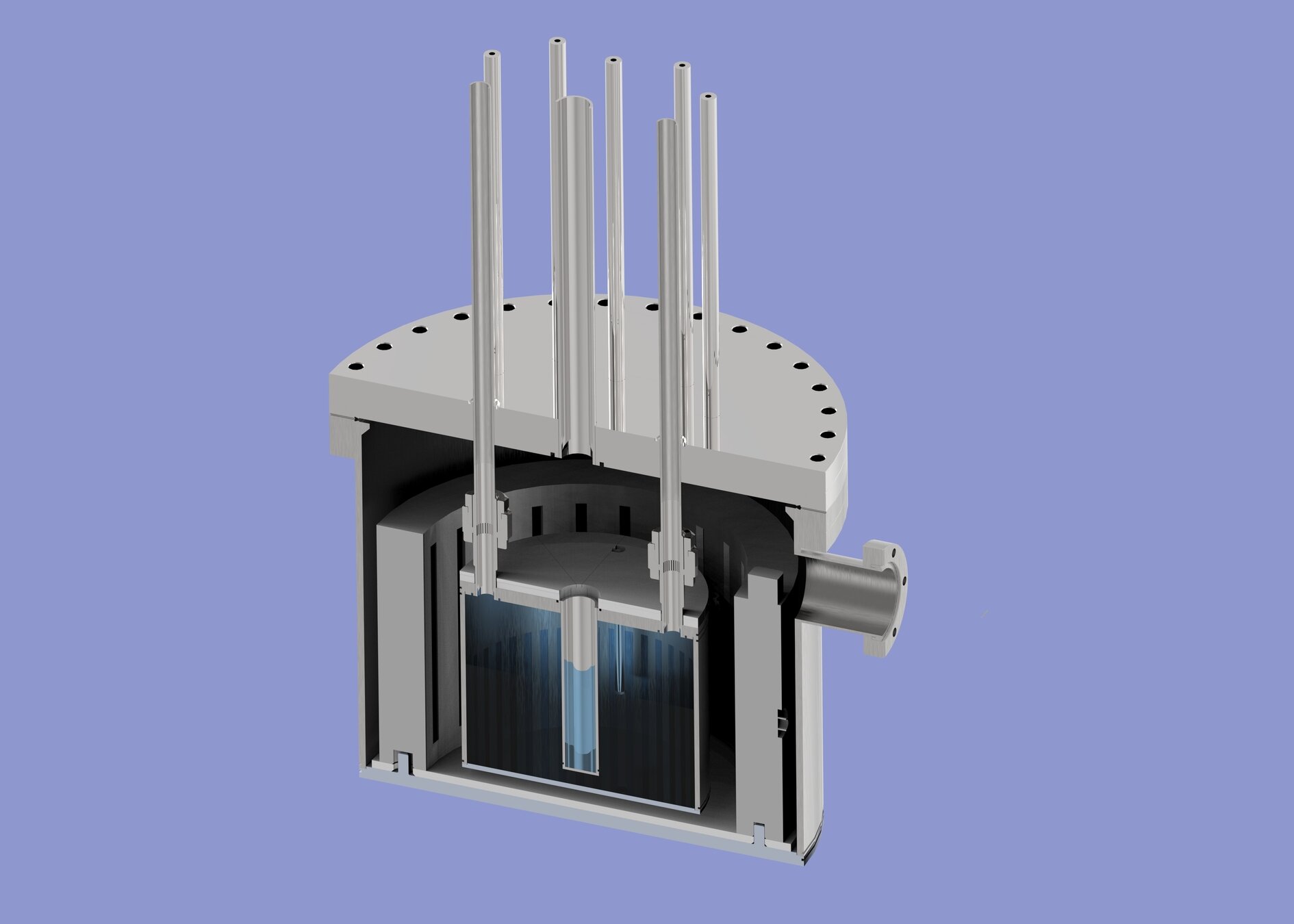
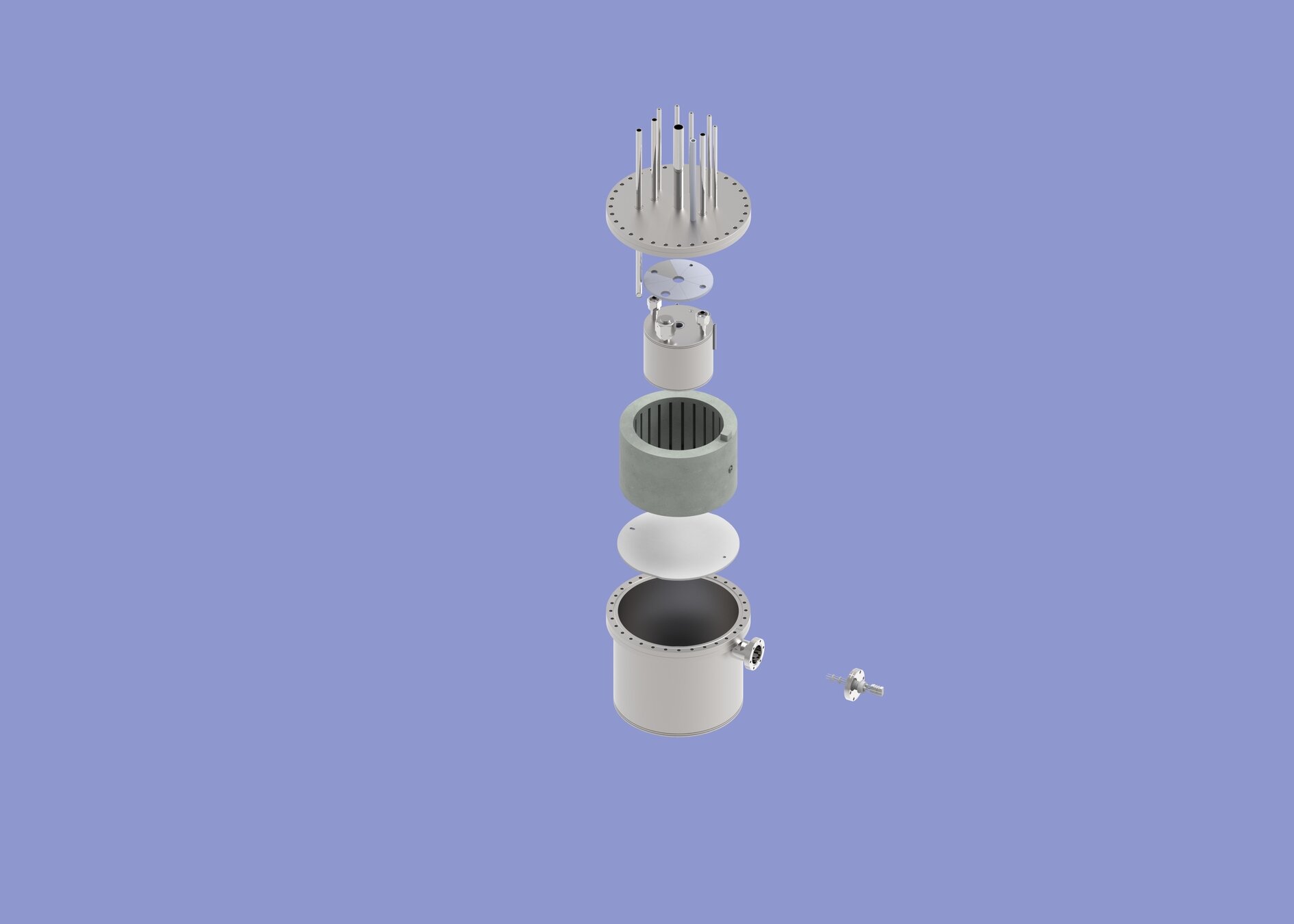


Only one neutron generator below the crucible

One bubbler per gas line
×6
The previous TBR record has been broken again!
Tritium Breeding Ratio

Note: only HT even when purging with pure He
- Increased solid angle of salt 100 mL: 2%, 1L: 7%
- Now we just need x500...



All the BABY 1L runs


LIBRA to validate models



OpenMC model
Is our neutronics model an accurate representation?
support lead bricks
?
Romano, Paul K., et al. ‘OpenMC: A State-of-the-Art Monte Carlo Code for Research and Development’. Annals of Nuclear Energy, 82 (1 August 2015): 90–97. https://doi.org/10.1016/j.anucene.2014.07.048.
DT generator
Salt
Epoxy

Tritium Breeding Ratio
Measured
Modelled
Our measurements agree very well with neutronics models
- ~ 10% uncertainty on neutron fluence measurement
- discrepancy on 100 mL attributed to permeation losses
- Ongoing effort on uncertainty quantification
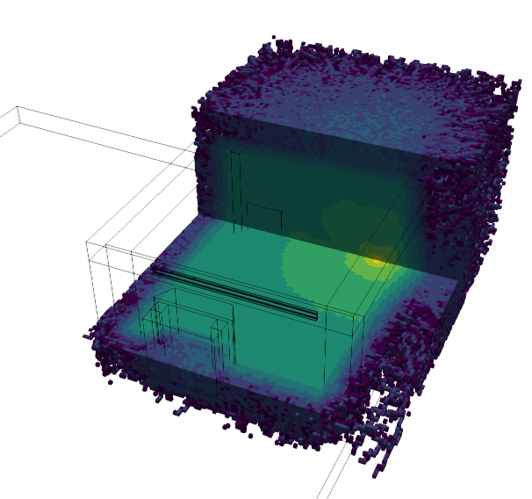
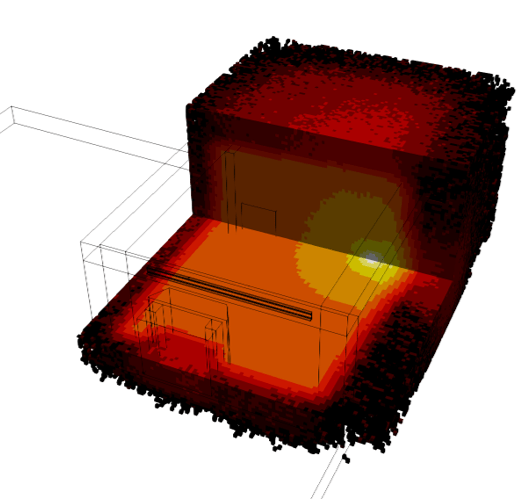
Neutron dose rates
Gamma dose rates
<𝟐 𝐦𝐫𝐞𝐦/𝐡
outside the vault ✅
\(3.2 \times 10^{6}\) 𝐦𝐫𝐞𝐦/𝐡
\(5.3 \times 10^{3}\) 𝐦𝐫𝐞𝐦/𝐡
\(10^{-2}\) 𝐦𝐫𝐞𝐦/𝐡
\(10^{-2}\) 𝐦𝐫𝐞𝐦/𝐡

The BABY experiment was modelled in OpenMC


ClLiF salt gives the highest TBR at the 100 mL scale

Using natural Li
A transient 0D model is used to simulate the tritium release
\(k_i\) mass transport coefficient (m/s)
neutron rate
Salt volume
Inner vessel
Outer vessel
- \( \mathrm{TBR} = 4.71 \times 10^{-4} \) (from OpenMC)
- \( \Gamma_n = 3.88 \times 10^8 \) n/s (from measurement)
- Mass transport coeffs. \( k_i \) (fitted)
100 mL
salt
Top release
Wall release
A transient 0D model is used to simulate the tritium release

Cumulative release (Bq)
Neutron generators on

Reproducibility

Varying the mass transfer coefficients only affects the dynamics
Redox potential affects the release dynamics

Cumulative release (Bq)

Redox potential affects the tritium speciation

Total tritium release

The 0D model reproduces the experimental data
Irradiation
Cumulative T release (Bq)
Model
Measurements
The results agree with the model

Very long experimental time

Cumulative T release (Bq)

No permeated T was detected
Inert atmosphere (He) so low recombination rate

8 months ago, SOFT, Dublin:
W Shmayda recommended to put some H2 in the purge gas.
We had not.
Cumulative T release (Bq)

Run #3: adding H2 to the sparge gas
Releasing T trapped in piping from previous runs
Pure He:
- No permeation
- Previous parameterisation is predictive ✅
Adding 1000 ppm H2:

Salt volume
IV metal surfaces
OV metal surfaces
IV bubbler
OV bubbler
Run #4: H2 from the start


Conclusion:
listen to Walter!
×10
From 60 days to 4 days!
Mass transport coefficient


LIBRA produces validation data for multiphysics models
See FESTIM details in James Dark's talk this afternoon

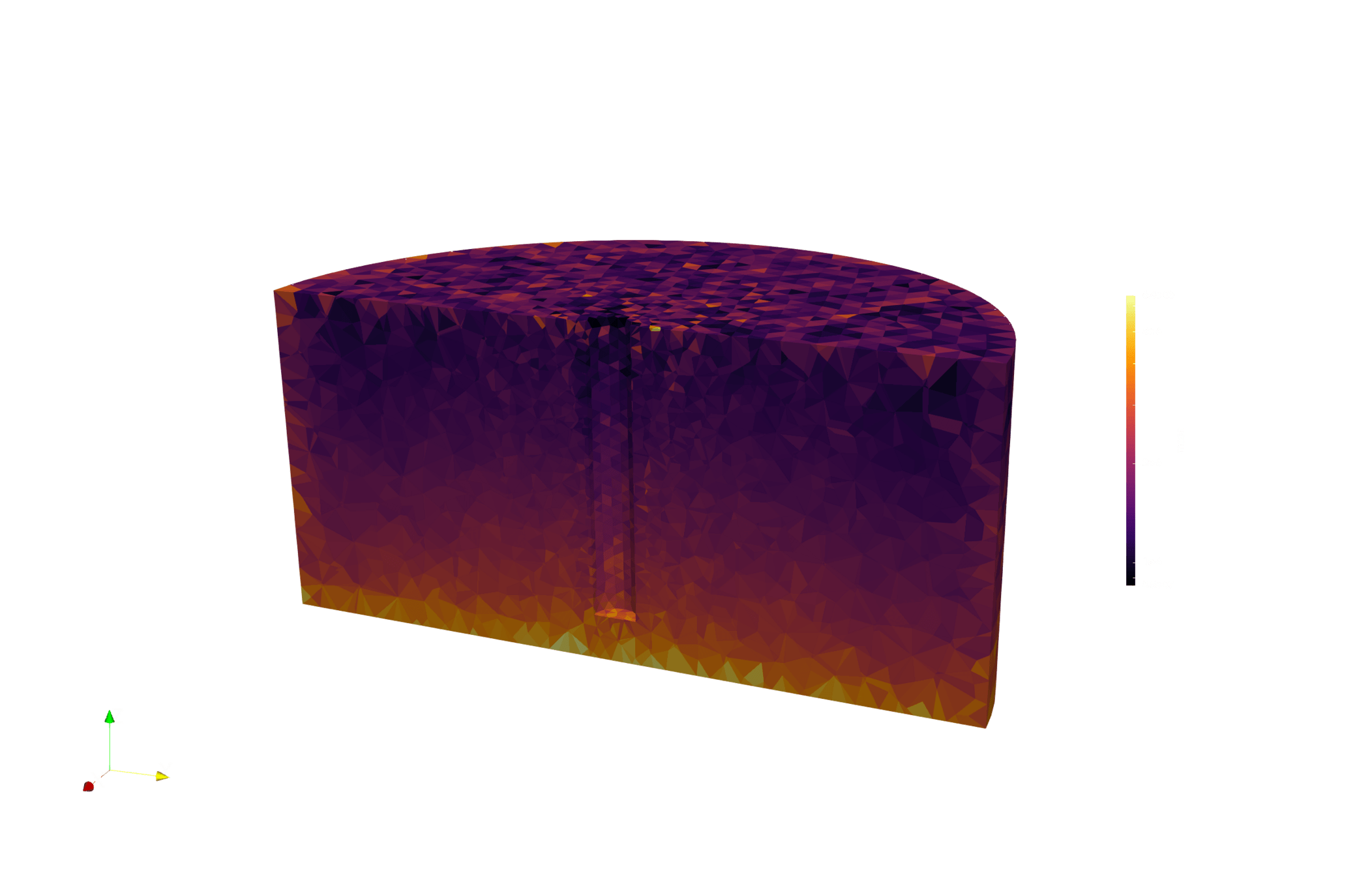
Tritium production map from neutronics (OpenMC)
Tritium concentration field (FESTIM)
Max conc. 1.4E13 T/m3
[T/n/cm3]

Natural convection neglected
LIBRA will help validate FESTIM models
Delaporte-Mathurin et al, International Journal of Hydrogen Energy 63, 2024, 786-802

Temperature
(steady state)

Velocity
(steady state)

Tritium concentration


The FESTIM model highlights a qualitative discrepancy
- Very sensitive to diffusivity
- Wall release > Top release
Different than measured
Hypotheses
- Advection not correctly taken into account?
- Permeation barrier: oxide layer?
- Complex chemistry?

Top release
Wall release


Diffusivities of FLiBe and FLiNaK
Where will we go from here?




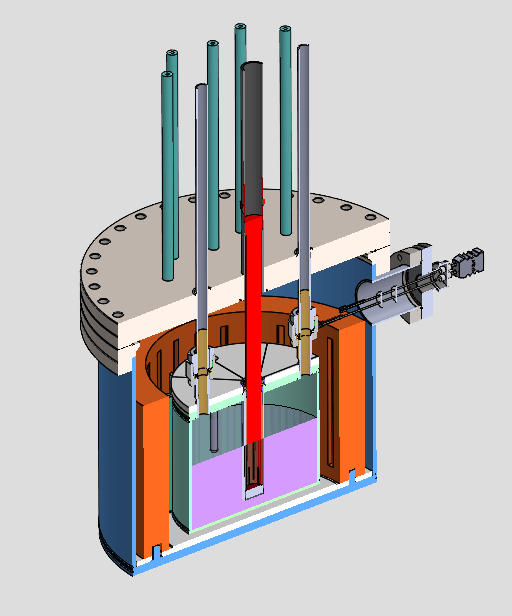

A staged approach to \(\mathrm{TBR} \approx 1\) ...
Tritium Breeding Ratio
LIBRA ONE (700 L)
LIBRA ONE
Measured
Expected
LIBRA-Pi
BABY
100 mL
1 L
ClLiF
FLiBe

More science experiments
May 2025
Our roadmap
100 mL
1 L
ClLiF
FLiBe
LiPb
LiOx

Tritium production map in LiOx packed bed


Irradiate LiPb and LiOx
100 mL
1 L
LIBRA Pi
ClLiF
FLiBe
LiPb
LiOx
manufacturing
coating
operation
BABY informs the design and operation of LIBRA-Pi

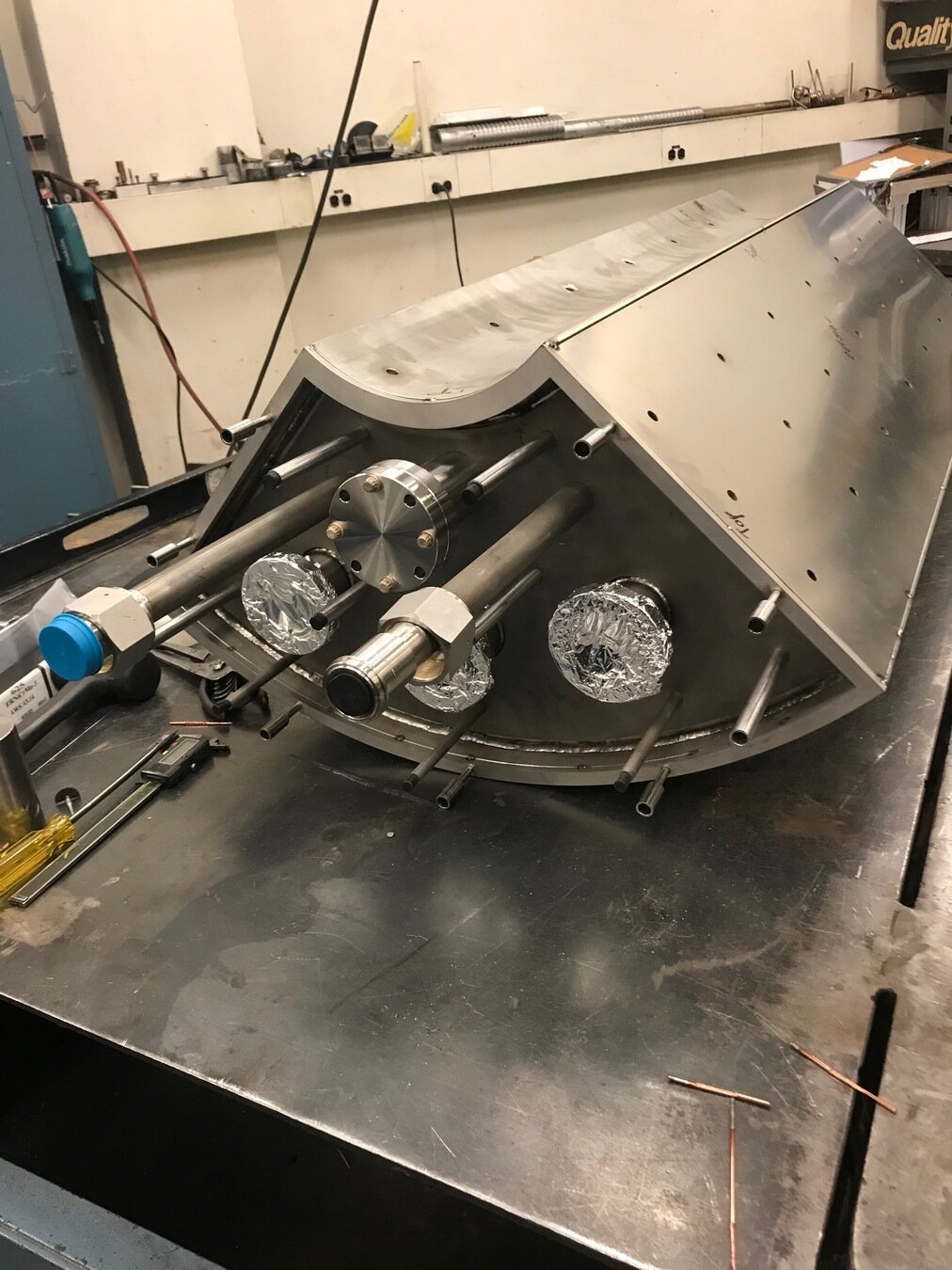
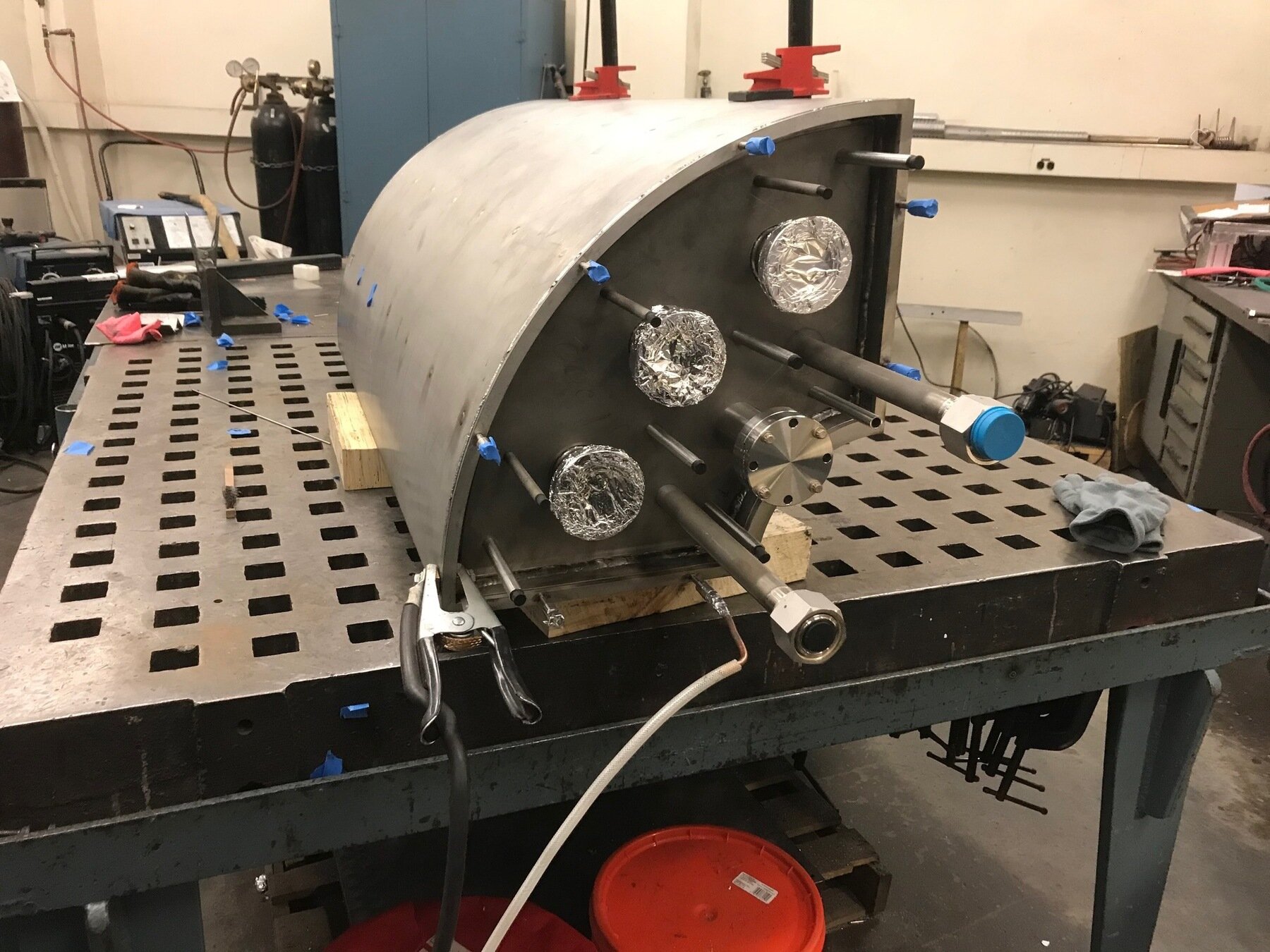
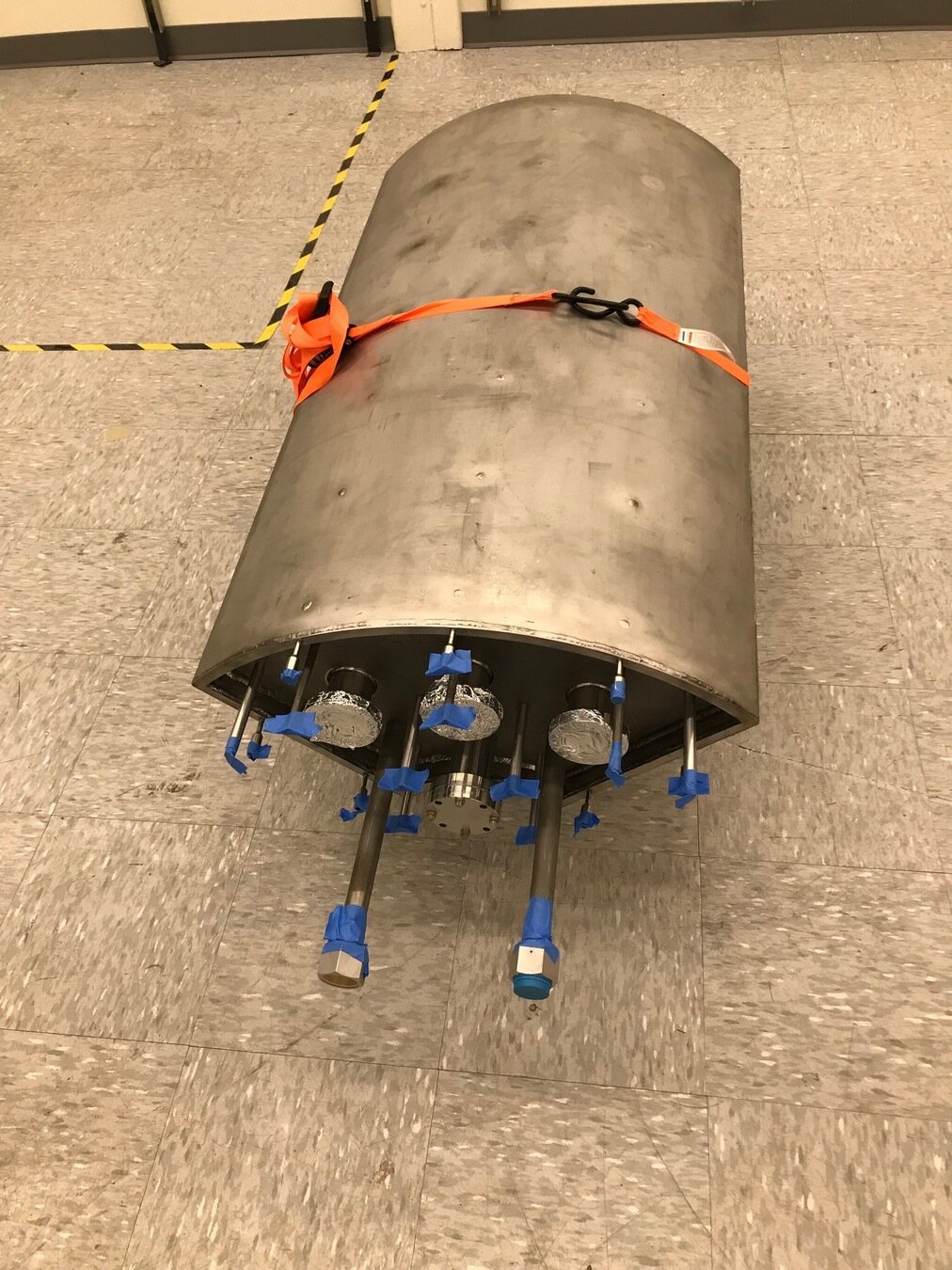
~100 L of ClLiF
100 mL
1 L
LIBRA Pi
LIBRA ONE
ClLiF
FLiBe
LiPb
LiOx
manufacturing
coating
operation
design
LIBRA ONE


FESTIM model
~700 L of FLiBe
100 mL
1 L
LIBRA Pi
LIBRA ONE
Modelling
ClLiF
FLiBe
LiPb
LiOx
manufacturing
coating
operation
design
validation data
informs design & operation
2025
LIBRA-toolbox
Experimental analysis
Tritium release models
Neutron detection
Neutronics models
Parametric optimisation
Tritium detection LSC counting
Modelling
Materials
Activation foil analysis
Diamond detector analysis
PRT analysis
spectrum analysis




Open-science and reproducibility are core values of LIBRA
- GitHub organisation:
github.com/LIBRA-project
- Zenodo community:
zenodo.org/communities/libra-project
- FAIR principles, open-science, 100% reproducible
Thank you!
Any question?
✉️ remidm@mit.edu



TFG 2025
By Remi Delaporte-Mathurin
TFG 2025
- 582



